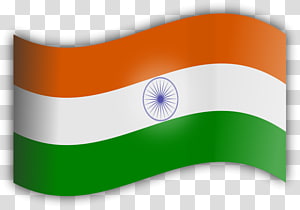National Anthem - Jana Gana Mana

English Lyrics
Jana Gana Mana
Adhinayaka Jay He
Bharata Bhagya Vidhata
Panjab Sindhu Gujarat Maratha
Dravida Utkala Banga
Vindhya Himachal Yamuna Ganga
Uchchala Jaladhi Taranga
Tava Subha Name Jaage
Tave Subha Aashish Mange
Gaahe Tava Jay Gaatha
Jana Gana Mangal Daayak Jay He
Bharat Bhagya Vidhata
Jay he Jay he Jay he
Jay Jay Jay Jay He
Telugu Lyrics
జన గణ మన అధినాయక జయహే.
భారత భాగ్య విధాతా.
పంజాబ, సింధు, గుజరాత, మరాఠా,
ద్రావిడ, ఉత్కళ, వంగ.
వింధ్య, హిమాచల, యమునా, గంగ,
ఉచ్చల జలధితరంగ.
తవ శుభనామే జాగే.
తవ శుభ ఆశిష మాగే.
గాహే తవ జయ గాథా.
జనగణ మంగళదాయక జయహే భారత భాగ్యవిధాతా.
జయహే! జయహే! జయహే… జయ జయ జయ జయహే.
Hindi Lyrics
जन-गण-मन अधिनायक जय हे, भारत भाग्य विधाता!
पंजाब-सिंध-गुजरात-मराठा, द्राविड़-उत्कल-बंग
विंध्य हिमाचल यमुना गंगा, उच्छल जलधि तरंग
तव शुभ नामे जागे, तव शुभाशीष मागे[l]
गाहे तव जय गाथा।
जन-गण-मंगलदायक जय हे, भारत भाग्य विधाता!
जय हे! जय हे! जय हे! जय जय जय जय हे!
Introduction
The Republic of India’s national anthem is “Jana Gana Mana.” Rabindranath Tagore, a multi-talented author, originally wrote it in Bengali as Bharoto Bhagyo Bidhata. The Constituent Assembly of India designated the first stanza of the song Bharoto Bhagyo Bidhata as the country’s anthem on January 24, 1950. The official playing of the national anthem lasts around 52 seconds. Occasionally, a condensed version that only plays the first and last lines is also performed. This version lasts about 20 seconds. The Indian National Congress’ Calcutta (now Kolkata) Session is where it was first performed aloud on December 27, 1911.
History
“Jana Gana Mana” is the name of India’s National Anthem. On December 11, 1911, India’s first Nobel laureate Rabindranath Tagore wrote the song’s original Bengali version. Only the first verse of the parent song, “Bharoto Bhagyo Bidhata,” a Brahmo hymn with five verses, has been designated as the national anthem. The National Anthem, when expressed succinctly, embodies the spirit of pluralism, or in more common terms, the idea of “Unity in Diversity,” which is at the heart of India’s cultural heritage.
The song’s lyrics first appeared in five stanzas in a Tatwabodhini patrika issue, a Bengali magazine. The song’s melody, in the raga Alhaiya Bilawal, was created by Tagore as a Brahmo Hymn, possibly with some assistance from his musician grand-nephew Dinendranath Tagore. The song’s final version was decided upon before its initial public performance on December 11, 1911.
The song was performed for the first time in front of an audience on the second day of the Indian National Congress’s annual meeting in Calcutta (now Kolkata) on December 27, 1911. It was then continued at the Adi Brahmo Samaj’s annual gathering in January 1912, but nobody really knew about it besides the people who read their journal, Tattwabodhini Patrika. The poem appeared in the Tatwabodhini Patrika, the Brahmo Samaj’s official publication, in January 1912 under the title Bharat Bhagya Bidhata, with Tagore serving as its Editor at the time.
In front of important Congress members like Bishan Narayan Dhar, the president of the Indian National Congress, and Ambika Charan Majumdar, Sarala Devi Chaudhurani, Tagore’s niece, sang the song in 1912.
The song was once more performed at a Congress conference in 1917, but this time the Mahraja Bahadur of Nattore provided the instrumental accompaniment.
On February 28, 1919, when Tagore visited the college and sang the song, it was performed outside of Calcutta for the first time by the bard himself at a session of Besant Theosophical College in Madanapalle, AnThe song mesmerised the college students as well as Margaret Cousins, the college’s vice-principal at the time and the wife of Irish poet Dr. James Cousins, who is also an expert in European music. Using notes that Tagore himself provided, the song was recorded in western notation and preserved in 1919 by Mrs. Margaret Cousins and her students in Madanapalle, Andhra Pradesh.
Specific Content Keywords : Jana Gana Mana,National Anthem,Rabindranath Tagore,Bharat Bhagya Vidhata,India,Anthem of India,Five Stanzas,Linguistic Diversity,National Identity,Independence Day,Republic Day
Patriotism,Unity in Diversity,Adhinayaka Jaya He,National Symbols,Cultural Heritage,Sovereign Nation,Poetic Composition,Indian Languages,UNESCO World Heritage.

